The God-Trick

From 4 May 2018 to 21 October 2018
Turin
Place: PAV - Parco Arte Vivente
Address: via Giordano Bruno 31
Times: venerdì ore 15-18; sabato e domenica ore 12-19
Responsibles: Marco Scotini
Organizers:
- Compagnia di San Paolo
- Fondazione CRT
- Regione Piemonte
- Città di Torino
Ticket price: Biglietto unico valido per l’esposizione permanente e le mostre temporanee: intero euro 4, ridotto euro 3. Gratuito minori di anni 10 e maggiori di anni 65, visitatori diversamente abili e un familiare o altro accompagnatore, un insegnante ogni 15 alunni, dipendenti AMIAT, i possessori dell’Abbonamento Torino Musei / Torino + Piemonte Card, i soci Slow Food, guide turistiche abilitate
Telefono per informazioni: +39 011 3182235
E-Mail info: info@parcoartevivente.it
Official site: http://parcoartevivente.it/
The exhibition title takes its inspiration from one of the central figures of the debate such as Donna Haraway. Known by most as the mother of Cyber feminism, Haraway has tried, many times, to disarticulate every conventional approach to reading the Anthropocene, eventually formulating workable alternatives and metaphors laden with narrative and generative power. Haraway wrote: “We also don’t want to theorize the world, much less act within it, in terms of Global Systems”. On the contrary, this means subjecting any kind of claim to the ‘objectivizing’ of the real to a detailed and prompt exercise of skepticism, of deconstructive analysis, of doubt. This exercise would reveal that which Haraway provocatively defines as “the God Trick”: a trick based on the illusion of eliminating the body of knowledge. For Haraway, knowledge is always situated knowledge, implanted within and from within a body whose ability to experience things is always determined by a precise burden of memory, a precise burden of history. In turn, this subject, has also been addressed by Jason W. Moore, in relation to the opposing elements of humankind/nature.
From the invitation to Haraway’ssituated knowledge, The God-Trickexhibition’s path unfolds: beginning with Nomeda and Gediminas Urbonas’s experiments into alternative energy, by means of the documentsrelating to the Folk Stone Power Plant, a project that was originally designed for the Folkestone Triennial (UK) in which an installation activated an international network of scientists. To this is added a relational and collective analysis of the waters with which the Critical Art Ensemblequestions the organization of our choices in ecological terms, proposing a laboratory process aimed at initiating a necessary conversation on this important problem. Lara Almarcegui will be presenting an unpublished formalization of the work Scavo, made at the PAV in 2009, in which revealing the different strata of the earth meant, above all, analyzing the past of the area under investigation, a past in which nature and
social and industrial history are intertwined. We then arrive at the pedagogy of Bonnie Ora Sherk’s Living Library, a new systemic framework, strategy and methodology for planning, designing, implementing and maintaining over time operations of the ‘ecologizing’ and re-greening of specific areas in various schools and communities. The exhibition ends with the large external interventions by Michel Blazy and Piero Gilardi. Where Blazy, with his Forêt de balais installation, uncovers the unexpected marvels of which nature is capable in its reclaiming of the areas which humankind has appropriated, Gilardi proposes Labirintico Antropocene, a labyrinthine path aimed at supporting us through the equally labyrinthine perception of the environmental crisis and climate change, rendered even more nebulous by the manipulative rhetoric of the mainstream media. All these works have the role of reminding us that there is nothing natural, nothing objective, nothing inevitable about the processes of capitalist accumulation, thereby encouraging us to go beyond the confines of thoughts that prevent us from seeing any alternative to the system.
Alongside the exhibition’s display area, the subjects proposed by the artists will be at the center of a second type of area, a discursive space articulated over two days of symposium, opening in parallel with The God-Trick. The aim, once again, is to discuss crucial issues head-on: how much time do we have left before the eco-systemic crisis becomes irreversible? By means of which social, political and cultural norms can we kick-start the profound transformation needed to create an equal and bio-centric society in a harmonious relationship with the eco-system of Planet Earth?
The debate will be opened on Friday 4 May at 3.30 pm and foresees the participation of Serenella Iovino, Serge Latouche, Stefano Mancuso and Luca Mercalli, moderated by Vincenzo Santarcangelo.
On Saturday 5 May at 10 am, the second day of the symposium will analyze the potential of art in social, bio-centric transformations, thanks to the contributions of the speakers Gaia Bindi, Nathalie Blanc, Valerie Da Costa, Marco Scotini and Sue Spaid, moderated by Franco Torriani. In the evening (3-6 pm) Piero Gilardi and Roberto Marchesini will introduce the plenary with the interventions of the artists of the exhibition. The whole program will end at 6 pm with a speech by Bonnie Ora Sherk.
Steve Kurtz– Critical Art Ensemble will lead the workshop Environmental dilemmas: Necropolitics and Public, on Sunday 6 May, from 12 am to 4 pm.
The exhibition and the symposium are supported by Compagnia di San Paolo, Fondazione CRT, Regione Piemonte and the City of Turin.
SCARICA IL COMUNICATO IN PDF

-
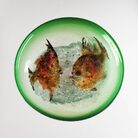 Dal 12 July 2025 al 24 November 2025
Venezia | Museo del Vetro
Dal 12 July 2025 al 24 November 2025
Venezia | Museo del Vetro
-
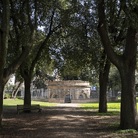 Dal 11 July 2025 al 21 September 2025
Roma | Loggia dei Vini - Villa Borghese
Dal 11 July 2025 al 21 September 2025
Roma | Loggia dei Vini - Villa Borghese
-
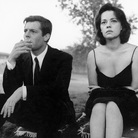 Dal 10 July 2025 al 10 August 2025
Roma | Palazzo Esposizioni Roma
Dal 10 July 2025 al 10 August 2025
Roma | Palazzo Esposizioni Roma
-
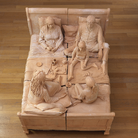 Dal 10 July 2025 al 3 November 2025
Casale Marittimo | Bolgheri, Castagneto Carducci, Casale Marittimo
Dal 10 July 2025 al 3 November 2025
Casale Marittimo | Bolgheri, Castagneto Carducci, Casale Marittimo
-
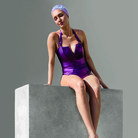 Dal 4 July 2025 al 21 September 2025
Roma | Palazzo Bonaparte
Dal 4 July 2025 al 21 September 2025
Roma | Palazzo Bonaparte
-
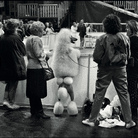 Dal 28 June 2025 al 21 September 2025
Roma | Palazzo Bonaparte
Dal 28 June 2025 al 21 September 2025
Roma | Palazzo Bonaparte


